This website uses cookies so that we can provide you with the best user experience possible. Cookie information is stored in your browser and performs functions such as recognising you when you return to our website and helping our team to understand which sections of the website you find most interesting and useful.
Grand Design: Lenny Kravitz tells us why the new Kravitz Grand is the perfect representation of his life’s work
By Michelle Johnson | 23 December 2020 | Culture, Lifestyle
The iconic rockstar and musician talks us through his vision for the Steinway & Sons collaboration, inspired by African art and brutalist architecture
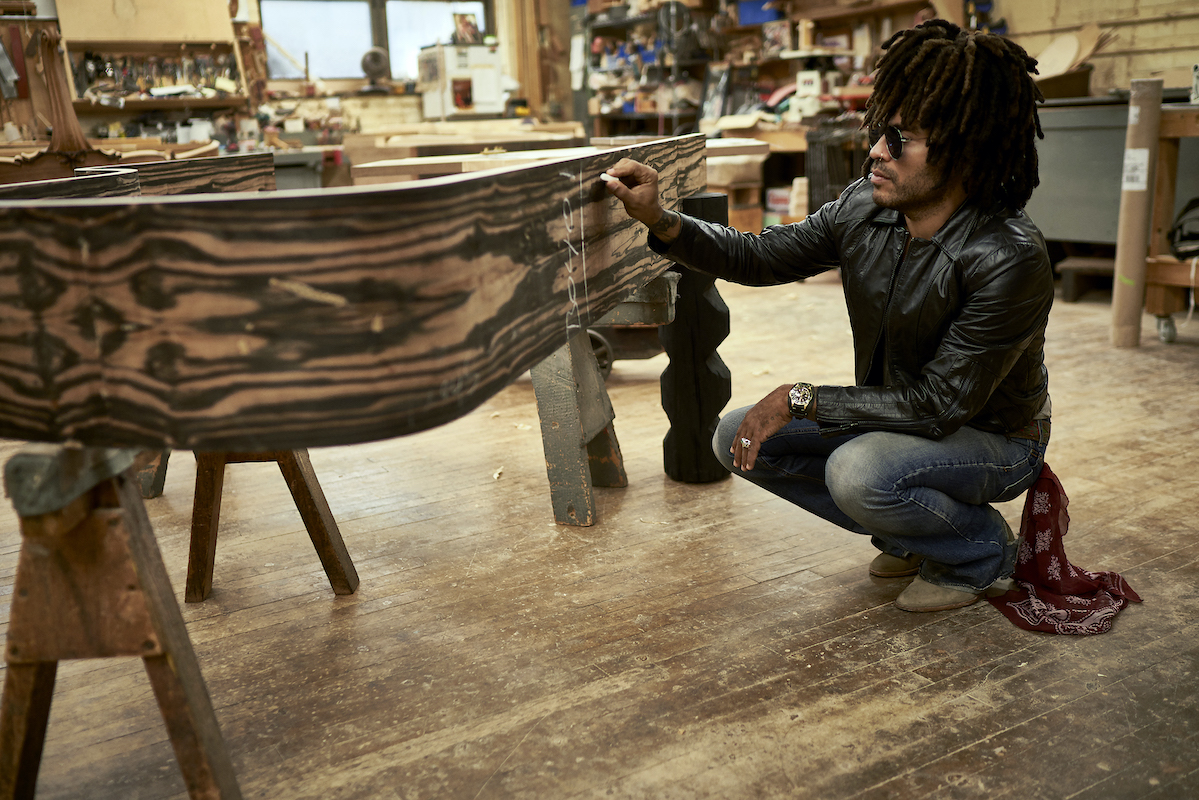
At the global launch of the Kravitz Grand, Steinway & Sons’ newest limited-edition grand piano, musician and designer Lenny Kravitz looks cool and casual in pinstripe shirt and white-rimmed shades as he speaks to us from the porch of his home in the Bahamas.
On the screen next to him, Steinway’s president and CEO Ron Losby is perched on the bench of the piano itself, ready to give us the first live – albeit virtual – performance from the 165-year-old brand’s showroom in New York, the city where the evening’s host, Architectural Digest editor-in-chief Amy Astley, also resides. Journalists and attendees eager to see the piano in action – and its remarkable Spirio R recording- and-playback function – log in from London, the US and Europe.
Yet, despite this virtual set up, which has become the norm in recent months, conversation flows easily – thanks in no small part to Kravitz’s effortless style and passion for his work. The 56-year-old is a Grammy Award-winning singer-songwriter, multi-instrumentalist, record producer and actor. Not content with dominating the entertainment world, he also founded Kravitz Design in 2003 – a conceptual architectural and interior design studio whose clients include Morgans Hotel Group, Leica, Swarovski Crystal, Dom Perignon and The Setai Group.
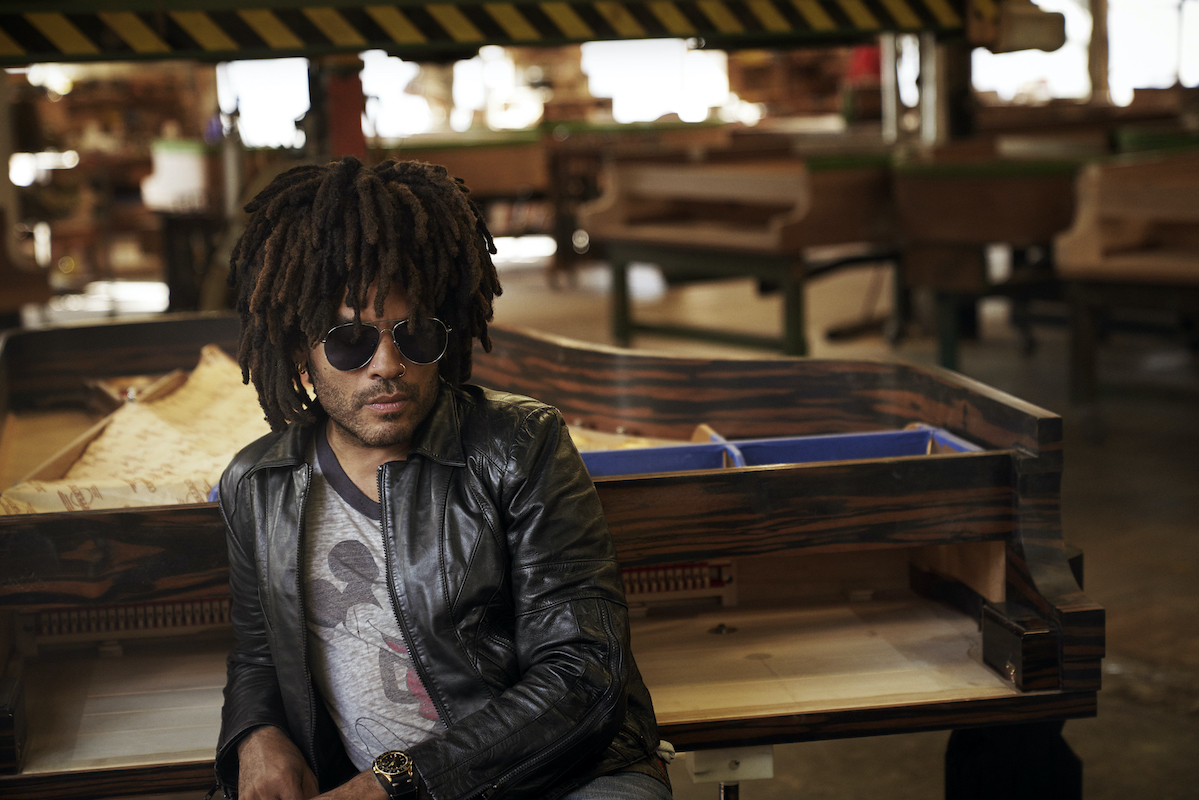
Kravitz’s collaboration with Steinway & Sons is perhaps the most definitive look into Kravitz’s creative philosophy; a piece that combines his musical style and rich architectural designs. “When Steinway was interested in collaborating, I didn’t have to think twice about it,” Kravitz says. “Steinway is an institution, and to be able to combine my musical world and my experience with design – it’s a dream project.”
The Kravitz Grand limited edition of 10 Model B Steinways – equipped with the brand’s revolutionary Spirio R – takes inspiration from African painting, sculpture and fabric designs via the Paris art scene of the 1920s. The piano itself features 15 layers of hard rock maple and rare Madagascar ebony, while its art deco and brutalist design elements include a “crackle” metallic finish on the plate and solid bronze castings for the pedal lyre and more.
“I had the opportunity to express myself through this piano, and I wanted it to reflect where I was at that moment, and where I still am,” says Kravitz, who describes African art and brutalist furniture as “two very big staples” of his personal style. “I had just redone my house in Paris for a second time: it [features] a lot of African sculptures and art. I wanted this piano to really reflect the entire character of the house.”

ARTISTIC RESONANCE
If Steinway was surprised at the architectural direction in which Kravitz wanted to take the collaboration, they were soon won over by his vision and passion.
“We immediately knew that we’d have the most unique limited-edition piano that Steinway & Sons had ever built,” says Losby. “We’ve collaborated with musicians and designers… but never had an experience of working with an individual who had both talents of design and musicianship. It’s a unique collaboration because Lenny is a musician; he understands the soul of this piano and his design work is so compelling.”
For his part, Kravitz threw himself into the process, visiting the Steinway & Sons factory to meet the company’s craftspeople and learn about the creation of the piano over the course of its three-year manufacture.
“Steinway was so supportive and gave me nothing but positive energy,” Kravitz says. “I ended up going to the factory, which completely blew my mind. That place is a temple, a museum. To meet all of these craftspeople and experts, it was fascinating. And then working with them on sculpting the legs, all the markings and carvings… Everyone involved was so positive. The only challenge was my own impatience – having to wait to finally see this thing.”
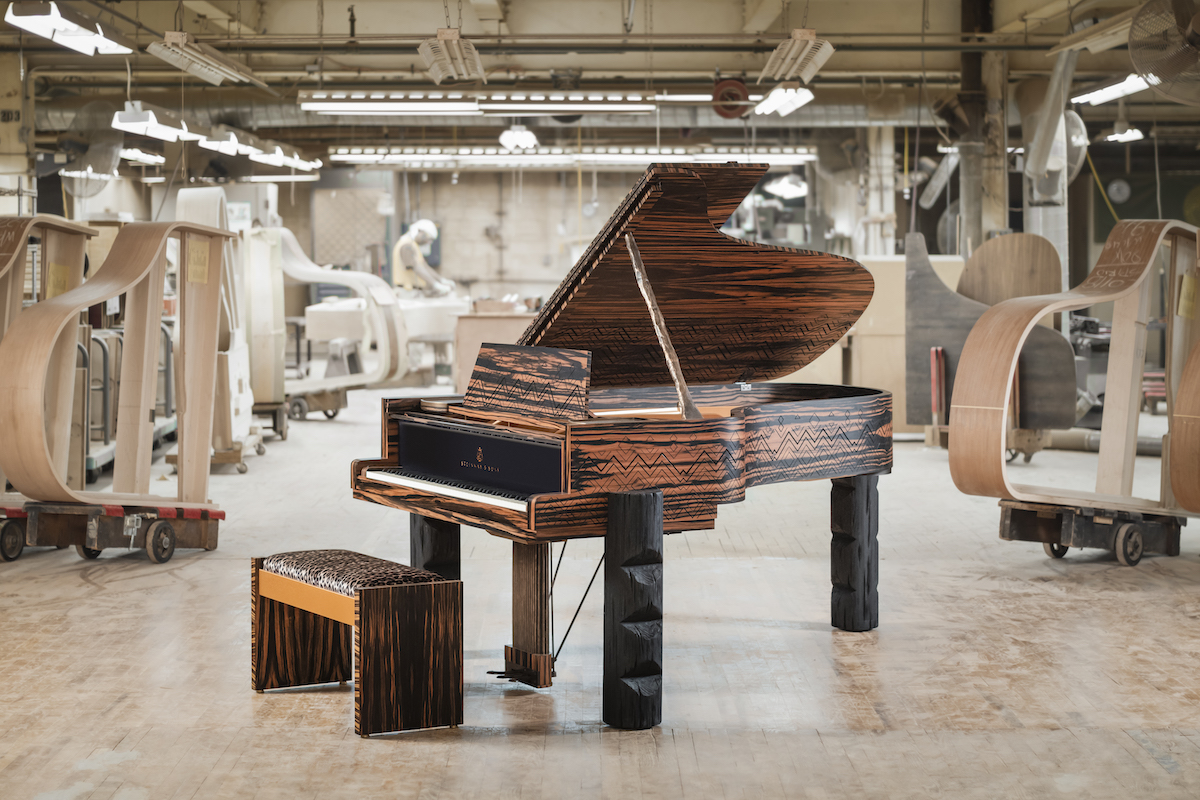
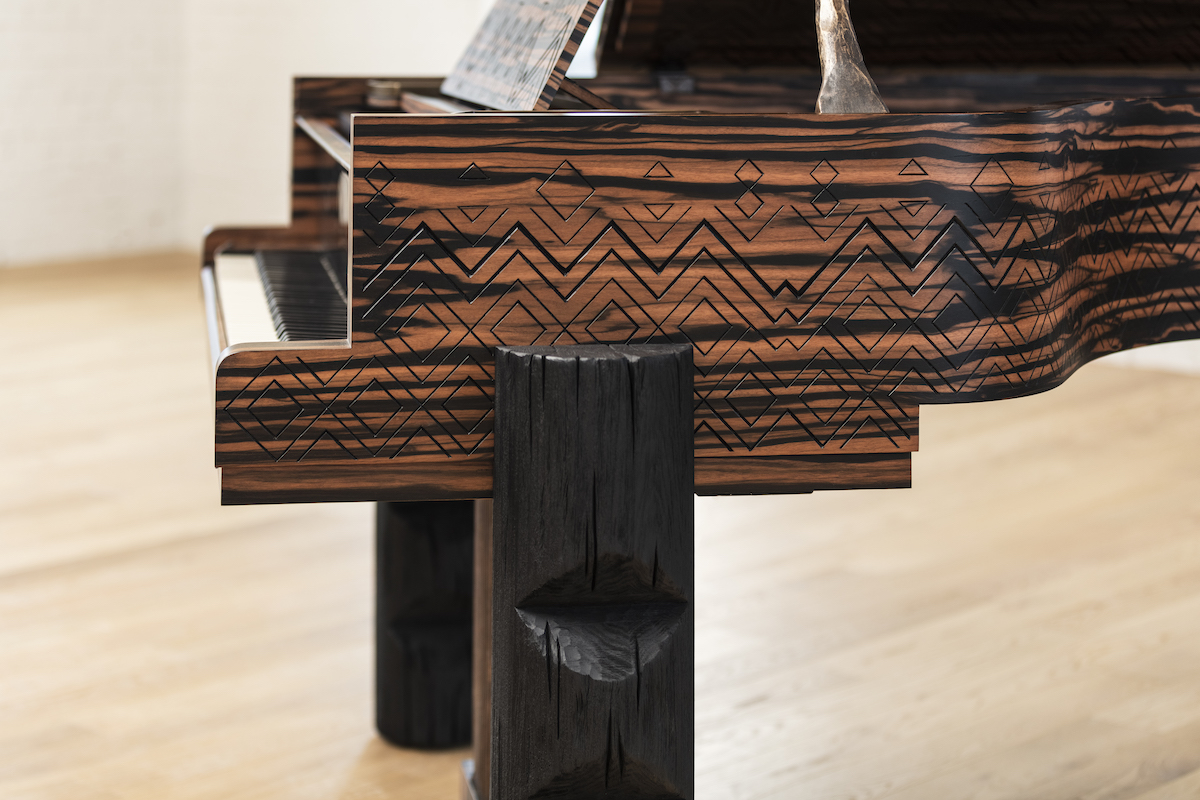
It was in this sculpture and handcrafting stage that Kravitz’s decision to blend function with form truly came to life. “There are so many people who have pianos in their homes but don’t play them, and so a piano becomes a kind of sculpture; a piece of art in your home,” he says. “My favourite [design] feature on the piano is the legs. The whole thing is beautiful, but that was the first vision I had for the shape.”
As far as his favourite musical features, Kravitz points immediately to Steinway’s Spirio R. This is a record-player feature capable of live performance capture and high-resolution recording and playback. As well as capturing the player’s own masterpieces, the Spirio also allows owners to listen to performances by the world’s greatest pianists for pleasure or practise.
“I love the fact that you can have this in your house and hear live music. It’s such a luxury,” says Kravitz. “As far as being a musician, there’s nothing that I could tell Steinway that would make their pianos perform better; they are the experts. The only thing I got involved with on the inside of the piano was the tone of the harp.”
MUSICAL JOURNEY
Kravitz’s love affair with the piano started when he was a child in Manhattan, living in a small apartment with his parents, news producer Sy Kravitz and actress Roxie Roker.
“In the corner of our living room was a very small spinet piano. My mother could only play one song: Beethoven’s Für Elise,” he recalls. While musician friends would visit and play the piano, Kravitz developed a fascination with the sound of it, and was soon sent to music classes at Harlem School of the Arts (HSA).
Kravitz was 11 when his mother was cast in her breakout television role, as Helen Willis in The Jeffersons, and moved the family to Los Angeles. Roker encouraged Kravitz to audition for the California Boys Choir, where he discovered “the classical world” – as well as his first Steinway.
“I sang with the Metropolitan Opera, did concerts with the Los Angeles Philharmonic with great conductors, and started to become familiar with the legendary Steinway piano. When I was making my first album in 1988, my engineer had a Steinway Model B grand piano from the early 1920s. I bought that piano from him, and it’s featured on every album I’ve ever made since.”
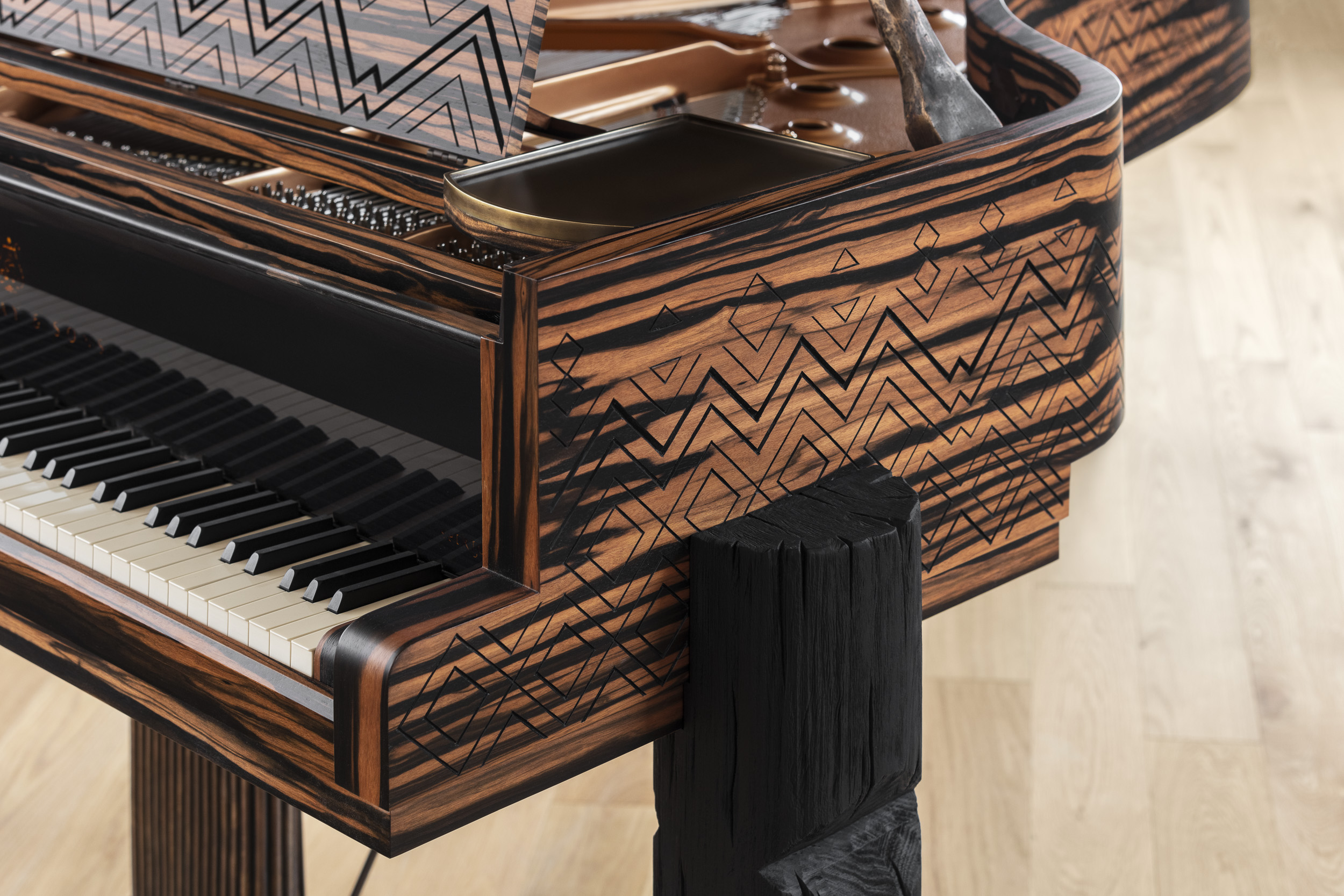
That Model B is, in fact, installed in the home studio at Kravitz’s Bahamas residence. Since that debut record, Let Love Rule, Kravitz has gone on to make 11 studio albums – winning four consecutive Grammy Awards for best male rock vocal performance from 1999 to 2002 – and enjoyed supporting roles in films such as Precious, The Butler and The Hunger Games. His design credentials are as impressive – his love of mixing opulent materials with cultural touches can be seen in Kravitz Design’s latest project, 75 Kenmare Street, a collection of luxury condominiums in Nolita, New York.
The chic district in Lower Manhattan is a world away from his musical beginnings in Harlem but, unbeknown to Kravitz, Steinway & Sons has enjoyed a decade-long educational involvement with HSA. Honouring their mutual relationship, Steinway will donate a portion of Kravitz Grand sales to the school.
“I took music classes at Harlem School of the Arts when I was a small child. It gave me a foundation,” says Kravitz. “I didn’t know that Steinway was involved [with the school]. I’m so pleased that good will be done for the Harlem school yards. I’m looking forward, actually, to getting reacquainted.”
This return to his roots is the icing on the cake for Kravitz who, it’s clear, approaches all things with an artist’s eye and songwriter’s passion for experience.
“When you’re coming up with creative things – whether it be a song or a piano – if you even get close to what you had envisioned in your mind’s eye, that’s great,” he says. “What’s absolutely amazing in this situation, is that the piano actually came out better than I had envisioned. It exceeded my vision.”







